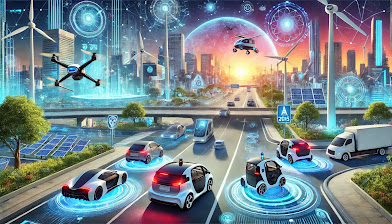Exploring the Diet of Crabs
Crabs are fascinating creatures that inhabit oceans, freshwater bodies, and even terrestrial environments. Their adaptability to various habitats is matched by their diverse diet, which plays a crucial role in maintaining the ecological balance of their surroundings. In this article, we delve into the feeding habits of crabs, exploring what they eat, how they obtain their food, and their role in the ecosystem.
The Omnivorous Nature of Crabs
Most crab species are omnivorous, meaning they consume both plant and animal matter. This dietary flexibility allows them to thrive in a wide range of environments. Depending on their habitat, crabs can eat algae, plankton, mollusks, small fish, detritus (decomposing organic matter), and even other crabs.
Common Foods in a Crab's Diet:
Algae and Seaweed: A staple for many crabs, particularly those in marine environments. Algae provide essential nutrients and are easily accessible.
Plankton and Microscopic Organisms: Many smaller crab species rely on plankton and tiny organisms for sustenance.
Mollusks and Small Invertebrates: Crabs use their powerful pincers to crack open the shells of mollusks like clams and snails.
Fish: Opportunistic crabs will scavenge on dead fish or occasionally hunt small, slow-moving species.
Detritus: Crabs play a critical role in the ecosystem as scavengers, consuming dead plants and animals and recycling nutrients back into the environment.
How Crabs Eat
Crabs have unique feeding mechanisms tailored to their diet. Their pincers (chelae) are multifunctional tools used for capturing, manipulating, and breaking down food. Once food is broken into smaller pieces, it is passed to the mouthparts, including maxillipeds, which guide the food into the crab's mouth.
Some crabs exhibit specialized feeding behaviors. For instance:
Filter-feeding crabs, such as the porcelain crab, use specialized appendages to sift plankton and detritus from the water.
Predatory crabs, like the blue crab, actively hunt and use their strong pincers to subdue prey.
Diet Variations Among Crab Species
While many crabs share similar dietary habits, some have evolved specific preferences based on their environment:
Terrestrial Crabs: Land-dwelling crabs, such as the coconut crab, feed on fruits, nuts, and even small animals. Their diet often includes material they find on the forest floor.
Freshwater Crabs: These crabs consume aquatic plants, insects, and organic debris found in rivers and streams.
Marine Crabs: Species like the Dungeness crab are known for their preference for shellfish and other marine invertebrates.
Crabs in the Food Chain
Crabs are vital components of their ecosystems, serving both as predators and prey. By consuming detritus and scavenging, they help maintain environmental cleanliness and nutrient recycling. At the same time, crabs are an essential food source for many animals, including birds, fish, and humans.
Human Interaction and Crab Diet
For those who raise crabs in aquaculture or as pets, understanding their dietary needs is crucial. Providing a balanced diet that mimics their natural food can ensure healthy growth and development. Commercial crab feed, supplemented with fresh vegetables, fish, and shellfish, often works well. The diet of crabs reflects their adaptability and ecological importance. By consuming a wide array of food, crabs not only sustain themselves but also contribute significantly to the health of their habitats. Whether in the wild or under human care, these remarkable crustaceans demonstrate the intricate connections within nature's food web.











